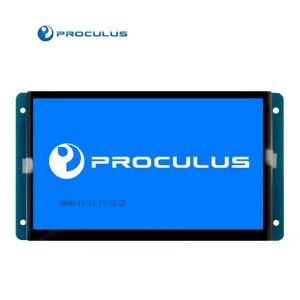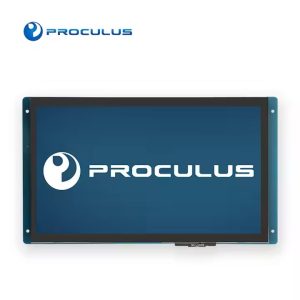Analysis of the Brightness, Signal Response Time, and Viewing Angle of the LCD Module
1. The number of tubes in the LCD module
Liquid crystal is a substance between solid and liquid. It cannot emit light by itself and requires additional light sources. Therefore, the number of lamps is related to the brightness of the liquid crystal display.
The earliest LCD display module had only two upper and lower lamps. Up to now, the lowest of the popular type is four lamps, and the high-end one is six lamps. The four-lamp design is divided into three types of placement: one is that there is a lamp on each of the four sides, but the disadvantage is that there will be dark shadows in the middle. The solution is to arrange the four lamps in parallel from top to bottom. The last one is the “U”-shaped placement, which is actually four tubes produced by two lamps in disguise. The six-lamp design actually uses three lamps. The LCD display manufacturers bend all three lamps into a “U” shape, and then place them in parallel to achieve the effect of six lamps.
2. The signal response time of the LCD module
The response time refers to the response speed of the LCD display module to the input signal, that is, the response time of the liquid crystal from dark to bright or from bright to dark, usually in milliseconds. To figure this out, we have to start with the human eye’s perception of dynamic images. There is a phenomenon of “visual residue” in the human eye, and the high-speed motion picture will form a short-term impression in the human brain. Animations, movies, etc. and the latest games now apply the principle of visual residue, allowing a series of gradual images to be displayed in rapid succession in front of people, forming a dynamic image. The acceptable display speed of the picture is generally 24 frames per second, which is the origin of the movie playback speed of 24 frames per second. If the display speed is lower than this standard, people will obviously feel the picture pause and discomfort. Calculated according to this index, the display time of each picture needs to be less than 40ms. In this way, for the liquid crystal display module, the response time of 40ms becomes a hurdle, and the display of less than 40ms will have obvious “tailing” or “after-image” phenomenon, which makes people feel chaotic. If you want the image to be smooth, you need to achieve a speed of 60 frames per second.
3. The viewing angle of the LCD module
The viewing angle of the LCD module is a headache. After the backlight passes through the polarizer, liquid crystal and alignment layer, the output light has directivity. In other words, most of the light is emitted vertically from the screen, so when viewing the LCD from a larger angle, the original color cannot be seen, and even the entire white or all black can only be seen. In order to solve this problem, LCD manufacturers have also begun to develop wide-angle technology.

 English
English


